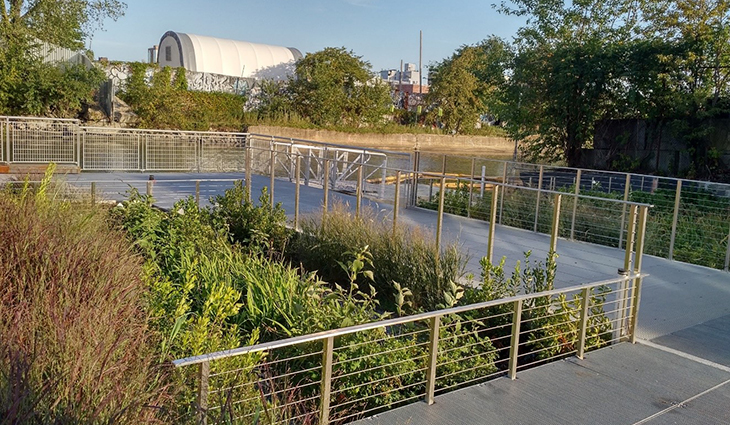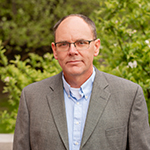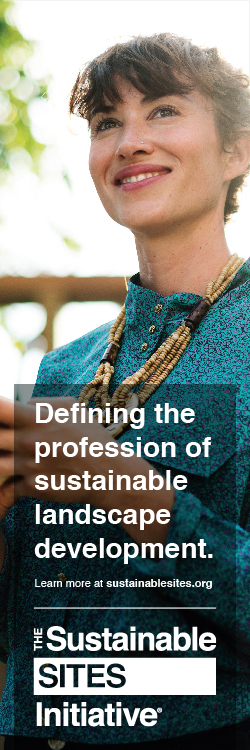Milestones & New Members
3/21/2023Leave a Comment

Gowanus Canal Sponge Park Pilot, Brooklyn, NY. Image provided by Susannah C. Drake FASLA, FAIA at Sasaki. Photo credit: Dlandstudio /Sasaki
40YEARS+
Georgia Chapter

Richard A. Kesselring, Sr., ASLA
Where are you from and how long have you been a landscape architect? It depends on which part of my 86 years we are talking about. My projects have been primarily located throughout the Southeasterner States. Home, where I practiced Landscape Architecture, has been in Maryland, Florida, North Carolina, and Georgia. The first 20 years of my 86 years were spent in Williamsport, Maryland. Not the one in Pennsylvania that is known for baseball. My home town is a small town located on the Potomac River. For a short period of time it was an important port town along the C & O Canal, located halfway between Washington, DC and Cumberland, MD. During my teenage years my father developed a large field growing nursery and landscape contracting company, Valley Evergreen Nursery. I worked at the nursery until I moved to Florida in late 1957. I completed the American Landscape School course in Landscape Architecture and received my Certification in 1958. In 1966, The State of Florida passed a law requiring registration of all Landscape Architects practicing in Florida. My Registration Number is 29. In 2020 I wrote and published my Memoirs and Musings “The Adventures of A River Rat”. In should have been titled "The Amazing Adventures of a Landscape Architect". How did you begin your career journey in Landscape Architecture? Two events set me on my lifetime path of developing the skills and knowledge required to be a top tier Landscape Architect. The First was in the mid 1950’s while installing a residential landscape using a plan designed by a local Landscape Architect. I was very impressed with the design details in the plan, and the results when we finished. The Second was a little later while discussing a landscape grading problem with a homeowner. We had arrived at a solution that I knew would solve the problem. I was then told that the owner felt she needed to talk with a Landscape Architect before she would proceed. By the time I arrived home that evening I had decided not to let that happen again. Within a short time I was enrolled at the American Landscape School. What do you think is the most important issue facing landscape architects today? After all these years, we still have not impressed upon most people the importance of what a Landscape Architect can bring to a project. Solidifying our identity and figuring out a PR campaign that will help the general public understand the scope and value of our work. We need to work very hard to gain the management and control of a developing project. Over the years, when I have been asked What I do as a Landscape Architect my answer is to say: “The Architect controls the development of the building, the Engineer controls the underground utilities, and the rest of the project is the Landscape Architect's responsibility. Of course this is an over simplification, but I find that most people start to grasp the concept. We, the Landscape Architects, must become an integral and participating member of the development team. We need to take control of the high ground in the development process or we are left with what rolls down the hill. As with Architects and Engineers our work as Landscape Architects are and should be very complicated and complex. There are many specialty fields that must be brought together: Land and Property Utilization, Placing Structures, Grading and Sculpting, Hardscape, Erosion Control, Natural Resource Utilization, Conservation Area Protection, Green Work, Irrigation, and Continuing Maintenance Programs may be required to complete a successful land or landscape development project. These specialties need to be identified as part of the Landscape Architects "Scope of Work". What have you gained by being a member of ASLA for 40 years? “PRIDE”. The ASLA was, when I started out in 1958, 65 years ago, and still is the standard bearer for quality and professional expertise in Landscape Architecture. My goal from the beginning was to become a member of the ASLA and I worked for over 25 years to be accepted as a full ASLA Member. The ASLA has provided exposure to design knowledge and examples of work performed by outstanding LA’s, in publications like LAND and information sessions at the ASLA Annual Conferences. The ASLA has developed and printed standard forms and guidance for setting up Design Studio Procedures. The ASLA has worked to provide opportunities and the educational courses that enable maintaining continuing educational requirements in multiple States. For a number of years I was registered in 9 different States and took advantage of the opportunities that were provided by the ASLA. Bringing this level of support to the state ASLA Chapters has continued the to be the foundation of the ASLA. What would you share with others as a reason for belonging to ASLA as a member? I believe there is strength in the growing numbers of Landscape Architects who are bringing new ideas to the Table. Projects that have shown to been successful and were controlled/managed by an LA need to be brought to the attention of the general public and the powers that be. Like it or not LA’s are in competition with other Design Professionals for control of developing projects. We need to do a better job of Marketing our Services. It is important that one understands what is required of each of the specialty fields that I outlined in previous answer #3. The more of these skills you understand and can master, the more valuable you will become. Learn how to make a quick, understandable presentation. The effort will pay big dividends. What would you share with those new to the profession of landscape architecture? I think it is essential that a new landscape Architect visit as many different LA offices and places where LA’s are employed, to get a feel for how many different ways our profession can be practiced. You need to get involved in your community. You need to circulate and get to know as many people as possible. Learn how your community works. If you are a part of a large organization the same kind of effort should be undertaken. Read about and visit as many gardens, arboretums, historical sites and recent landscape developments as you can. You will learn that each one has its own character and feel. Expand your horizon by traveling. These are not new ideas, but they must be emphasized early in the training and educational process. I am proud to say that my oldest son Richard (Andy) Kesselring Jr. decided to become a Landscape Architect, graduated from the University of Florida and is a member of the ASLA. He has carved out his own path and is in private practice in Florida. Early in his professional life he took a job in Germany with an LA firm. It was a great way to visit the many historic Gardens in Europe and work in a complete different environment. Remember the roots of our profession started with plant material and how it has been used to make living a little more pleasant. Is there anything else you would like to share to commemorate your 40 years with ASLA? I would like to thank the ASLA, and the Florida and Georgia ASLA Chapters for the recognition they have given me. I started out at a different place then most Landscape Architects. At that time Landscape Architects where considered as the "Lily Whites" because they did not appear to get their hands dirty, which we know was not true. You could not be accepted as a member and be associated with a landscaper or Landscape Contracting organization. Fortunately for me another pathway was established. It was referred to as a Senior Exam and I applied. After submitting designs, photos, specifications and standing before a panel of ASLA members to explain why I should be offered membership, I was proud to accept the offer when it finally came in 1982. In 2010 The FLASLA ask if I would participate in a Panel of long time members, it what was billed as the Pioneers of the Profession, I was one of four on the stage that day. After I retired in 2011 the Georgia Chapter of the ASLA gave me "Emeritus Status". Being a Landscape Architect has allowed this "Williamsport River Rat" to travel the world and be a productive citizen.
30 YEARS+
Michigan Chapter

Woodrow "Woody" S. Isaacs, III, ASLA
Where are you from and how long have you been a landscape architect? I am originally from Battle Creek, Michigan. I have been a registered landscape architect since 1993. I became interested in design as a high school student; my school (Battle Creek Central) offered drafting and architectural drawing classes. My initial mentor was Mr. Ronald Densborn (teacher at BCC), who encouraged me, and assisted me in attending a design competition at Lansing Community College during my high school years. After high school, I attended Michigan State University, where I received my Bachelor of Landscape Architecture in 1990, after initially majoring in Computer Science. After working in the private sector for other firms, I co-founded VIRIDIS Design Group in 2006 with my business partner Tim Britain. We now have offices in Kalamazoo and Grand Rapids, Michigan. How did you begin your career journey in Landscape architecture? After graduation, employment opportunities in Michigan were scarce, so I looked out of state and was offered an entry-level position with a multidisciplinary firm in Lexington, Kentucky – Sherman Carter Barnhart Architects (SCB). At SCB, I made many good friends, especially William Esarey, ASLA, an established landscape architect who provided steady guidance to me as I began my career. While in Kentucky, I passed the registration exam and joined ASLA (both in 1993). I had an opportunity at SCB to work on many different project types, including educational, office, and multi-family housing. I was also able to hone my CAD skill set (with our office having just started adopting CAD when I joined in 1990) while working with Bill at SCB. What do you think is the most important issue facing landscape architects today? As an entrepreneur and having worked in multidisciplinary firms over many years, I feel that the most important task for landscape architects is to demonstrate our leadership across all aspects of site development; of course landscape design, but also grading, drainage, natural stormwater systems, etc. Through my education and experience, I believe that landscape architects have much to offer beyond landscape design. What have you gained by being a member of ASLA for 30 years? Being an ASLA member has given me opportunities for networking with fellow landscape architects and allied professions, continuing education options, and information about professional trends based on practices nationwide. Additionally, submitting projects for awards programs has been very fulfilling professionally. What would you share with others as a reason for belonging to ASLA as a member? ASLA provides avenues for continued professional growth for both young and established landscape architects. Having a national organization that guides professional activities is invaluable and well worth the cost of membership. What would you share with those new to the profession of landscape architecture? Unlike many other professions, being a landscape architect offers a number of different career paths, from working as a designer in a multi-disciplinary firm, to working with design-build clients and focusing on the construction side. Additionally, landscape architects have opportunities to work for governmental agencies and parks departments, where our profession can have a strong influence both in the design of public spaces as well as policymaking. Landscape architecture, in my opinion, provides a great balance of technical work combined with opportunities to be outdoors and being able to connect with people. What is your favorite project in your career and why? Although I have worked on many great projects over the years, my favorite is Milliken Nature Center at Arch Rock, Mackinac Island, Michigan. This is due to several factors including my family’s love for the Island (we vacation there every summer), the beautiful, natural location, and the challenges inherent in designing improvements in such a historic location. Our firm (VIRIDIS Design Group) teamed with AE firm Tower Pinkster and the State of Michigan on this exciting and much-needed project. The project involves replacement of the existing 1970’s era restroom (at one of our state’s most-visited tourist locations) with a new visitor center named after one of Michigan’s former Governors, William Milliken. VIRIDIS provided landscape architectural and civil engineering services for the exterior spaces around the visitor center. What in your view is the most important thing that landscape architects provide? I believe landscape architects provide valuable guidance to clients and teams on environmental aspects of projects such as building siting, minimizing earthwork, native species selections, and water conservation.
20 YEARS+
New York Chapter

Susannah C. Drake FASLA, FAIA
Where are you from and how long have you been a landscape architect? I am from VT and the first LA I met was Dan Kiley. How did you begin your career journey in Landscape architecture? Visiting Kiley studio was an inspiration. I should have asked him for an internship, but having spent all my life in VT, I needed a change. I was working as an architectural designer and an issue of Progressive Architecture that came to the office described several exciting practices in San Francisco. I decided to pick up an move. What do you think is the most important issue facing landscape architects today? In my college essay I was asked the same question. At 16 years old I said- “Loss of our natural lands.” I am now doing my part to adapt infrastructure to help communities by bringing natural ecosystems back to cities. What have you gained by being a member of ASLA for 20 years? I was president of the NY chapter and Trustee of NY State. The ALSA helped me become the leader that I am. It also gave me incredible relationships that I cherish. What would you share with others as a reason for belonging to ASLA as a member? There are so many reasons, it is hard to narrow it down to one. I believe that we are more powerful through a collective voice. A strong voice is critical to the future of civilization in the face of climate change. What would you share with those new to the profession of landscape architecture? It is a truly rewarding way to make a difference through your work but requires passion and perseverance. What is your favorite project in your career and why? The Gowanus Sponge Park. It is my favorite because it introduced new methods for systematically changing the way urban storm water is managed. Perhaps even more significantly, it engaged communities in making that change. What in your view is the most important thing that landscape architects provide? We are stewards of public health by making healthy environments for people to be in nature in all its forms.
30 YEARS


.png)
.png)
.png)
.png)
.png)
(1).png)

